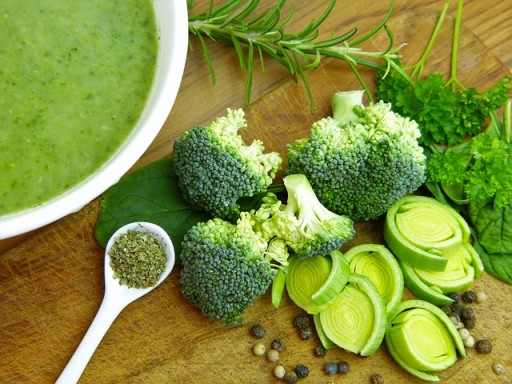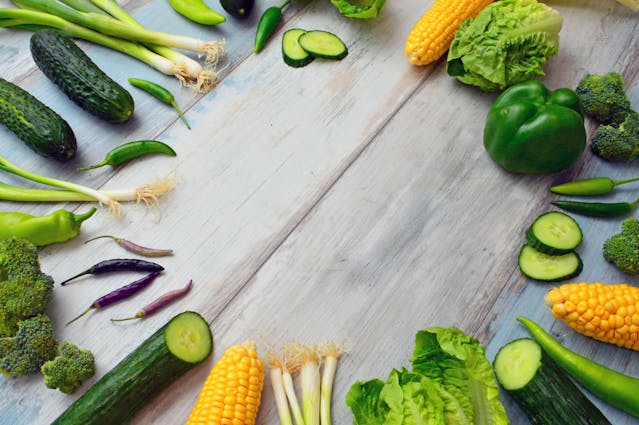Green Vegetables| A Culinary Journey Adds Flavour And Health Benefits

Green vegetables are also called leafy greens, pot herbs, leaf vegetables or simply greens. These are the plant leaves eaten as a vegetable and when eaten raw in a salad can be called salad greens.
Leaf vegetables are composed of thousands of species of plants and edible leaves. Lettuce, spinach, fodder crops, and even woody plants of various spices provide edible leaves for humans. Some of the greens are drying and grinding into powder and pressing for juice can be used to involve these crop leaves in a diet.
Green vegetables look refreshing and pretty and are more beneficial for the human body. These are the catalysts to boost immunity and metabolism and help keep the body in shape and healthy. These leafy vegetables are low in calories and fat and high in dietary fibre, vitamins A, C, K, folate and manganese.
The nutritionist and dieticians recommend adding lots of greens to the daily diet for several health benefits of green vegetables.
Some Leafy Green Vegetables:
According to the information highlighted by the health site, here we have discussed several green vegetables along with the health benefits of adding them to our regular diets:
Spinach:
It is a staple in the kitchen and is rich in iron, vitamins, and protein. Iron, the vital mineral is required for making haemoglobin, protein provides oxygen to the muscles, and vitamins play vital roles against various diseases.
Mustard Greens:
It is popular in northern Indian cuisine and known as Sarson Ka Saag. These greens are rich in vitamins A & C with a small amount of magnesium and potassium. Magnesium is involved in regulating blood pressure, blood sugar, muscle and nerve functions and potassium is responsible for many bodily functions such as muscle, heart and more.
Collard Greens:
It is a southern nutritional leafy green that provides calcium, vitamin C, folate, lutein, and zeaxanthin. It supports eye health and has a beneficial effect in delaying eye-related diseases.
Kale:
The dark leafy green Kale is the source of Vitamin C and K and also the essential mineral manganese. It is used as a popular leafy green in salads due to its bitter taste.
Fenugreek Leaves or Methi:
It adds a distinct bitter-sweet taste and is cherished for its unique taste and health benefits.
Radish Greens:
It promotes digestion and boosts metabolism as these greens are excellent sources of vitamin B6 and iron.
Amarnath Leaves or Chaulai saag:
These are rich sources of vitamins and minerals.
Drumstick Leaves or Murungai Keerai:
These are used mainly in South Indian cooking to enhance both flavours and nutritional content.
Basella Alba or Pui Shaak:
It is also known as Malabar spinach and is a nutrient-rich green.
Colocasia Leaves or Patra:
It is mainly used in Western India. It creates flavourful snacks and side dishes.
Brahmi or Ondelaga:
It is an Ayurvedic herb used in South Indian cuisine, particularly in Kannada. Its leaves are often added to salads and chutneys.
Indian Sorrel or Gongura:
It is popular in Andra Pradesh and adds a distinctive flavour to the regional cuisine. Its tangy leaves are used to prepare chutneys, pickles, and curries.
Turnip Greens:
These greens are the powerhouse of nutrients, vitamin K and folate, B vitamin along calcium. It plays a crucial role in bone and dental health.

Swiss Chard:
It is defined in the same family of dark greens as beets, mussatto, and Cheryl. Swiss chard is a rich source of vitamins A, C, and K and is important for supporting immune health and bone health.
Apart from the greens mentioned above, some other green vegetables like Bok Choy (Chinese Cabbage), Romaine Lettuce, watercress, endive, Dandelion Greens and many more are also rich sources of various minerals, vitamins, and nutrients.
Nutritional Contents and Health Benefits Of Green Vegetables:
Abundant Stores Of Natural Vitamins:
All green vegetables have an abundant store of vitamins from nature. Moringa, spinach, cabbage, and Kale are known for their superior vitamin content. Moreover, they are a good source of vitamins A, K, E, C, beta carotene, folate and also B1, B2, B3, B5 and B6 from these greens.
Rich Source Of Minerals:
Iron, Magnesium, potassium, Zinc, calcium, phosphorus, and sodium can be added naturally to the diet by consuming green leafy veggies. They help to overcome the deficiency of dietary minerals and maintain the daily requirements.
Source Of Micro And Macro Nutrients:
The micro and macro nutrients are required in small quantities in the human body. Green leafy vegetables contain essential macro and micronutrients to prevent damage to the cells, enhance eyesight, boost the immune system, and various functions of the body.
Green veggies have so many micronutrients like beta-carotene, and lutein and also contain many macronutrients like complex carbohydrates, protein, fibre, and minute traces of fat.
A Good Source Of Fibres:
These pot herbs have good fibre content that makes you feel satisfied after consuming them. It improves digestive and cognitive issues.
Low Fat Intake:
These leafy greens contain nearly zero fat. Hence these greens save us from consuming fats and lipids and keep away from cholesterol, heart disease and many more health complications.
Role Of Disease Prevention:
People may suffer from various diseases caused due to the deficiency of different vitamins, minerals, and other nutrients. These veggies play an important role in recovering from certain health conditions and illnesses like mineral deficiencies, poor immunity, poor eyesight, and even certain heart diseases.
Leafy greens are rich sources of minerals, vitamins, and various macro and micronutrients that are needed to prevent various diseases and maintain overall health. For example, Poor eyesight, mineral deficiency(anaemia caused by iron deficiency), weight problems, poor immunity, a sign of ageing, constipation, blood clotting, weak bones, heart diseases and high cholesterol.
Risk of Green Vegetables:
All greens are nutritious and can interact with certain drugs. However, overconsumption can cause some health difficulties.
Vitamin K may interact with blood thinners and lessen their effect. The greens like collards, spinach, and chard contain a large amount of Vitamin K. It should be kept in mind that people who take blood thinners should not try to avoid vitamin K.
Some greens contain chemical substances like oxalates, nitrates and phytates. These can cause health complications, particularly in babies younger than 7 months. Moreover, oxalates may produce kidney stones and can hamper the absorption of calcium.
Ways To Incorporate Greens In The Diet:
Several ways are there to include leafy greens in the diet. Some of them are including:
- Salad.
- Soup.
- Juice.
- Sandwich.
- Sauces.
- Add ons.
- Sautes and stire fries.
- Pizza.
- Wraps.
- Healthy bowls.
Final Thought:
We can conclude making a thorough journey through this article that green vegetables are rich sources of various vitamins like A, C, K, and more. Additionally, they are good sources of minerals and different micro and macronutrients. All of them play a crucial role in preventing various diseases and improving human health.
Many leafy greens can be found year-round. Hence you can incorporate these leafy greens in different dishes as per your taste and choice to relish different flavours and health benefits.
FAQs:
What Are Called Boiled Greens?
When the greens are cooked for food without adding spices, they are called boiled greens.
Are there any Non-Leafy Vegetables?
Some non-leafy vegetables are carrots, cucumber, tomato, lady finger, brinjal, pumpkin and many more.
What Are Called Dark Leafy Greens?
Some dark leafy greens include kale and spinach. mastered greens, bok choy and more.



